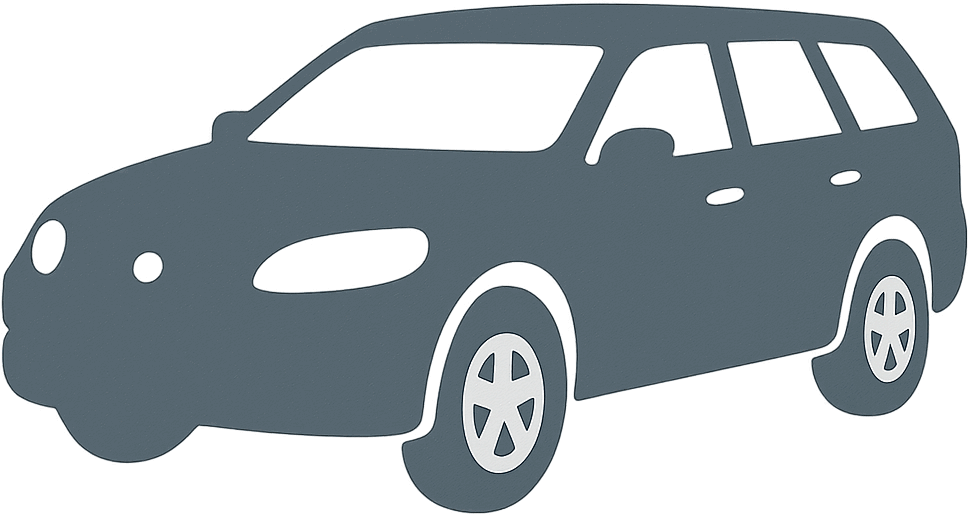 1997 Lada 21113 Dimensions, Size & Specs
1997 Lada 21113 Dimensions, Size & Specs
The Lada 2111 (generation 21113) is a station wagon produced between 1997 and 2004 by Russian manufacturer AvtoVAZ. It represents a practical, mid-size family car in the Lada lineup, designed primarily for reliability and utility. Known for its boxy style typical of Eastern European cars of its time, the 2111 was appreciated for its spacious interior and cargo capacity, offering versatility for both passengers and goods.
Although exact dimensions can slightly vary depending on the model year and trim, the Lada 2111 measures approximately 4.3 meters (around 169 inches) in length, with a width close to 1.67 meters (about 66 inches). Its height stands at roughly 1.43 meters (56 inches), making it compact enough for urban driving but with enough height to offer comfortable seating.
Weighing in the range of about 1170 to 1250 kilograms (2580 to 2755 pounds), the Lada 2111 balances modest weight and sturdiness. Its station wagon body style provides a significant advantage over its sedan counterparts, featuring an extended rear cargo area accessible via a large tailgate, which enhances practicality for families and small businesses.
Under the hood, the Lada 2111 typically housed inline four-cylinder engines known for simple mechanics, ease of maintenance, and fuel efficiency valuable in various driving conditions, especially within Russia and neighboring markets. Its raw and functional design suits those looking for cost-effective transport with straightforward servicing.
Compared to other station wagons from the late 90s and early 2000s, the Lada 2111 holds a unique position, offering a blend of basic technology, affordability, and durability. This model represents a significant chapter in Lada’s history, especially as the automotive market evolved and expanded during the transitional years of the late 20th and early 21st centuries.
Discover the standout features that make the 1997 Lada 21113 a leader in its class
Have a question? Please check our knowledgebase first.
The Lada 2111 21113 station wagon, produced from 1997 to 2004, exhibits dimensions roughly consistent with its class. While specific figures can vary slightly depending on variant and equipment, typical dimensions are approximately 4,260 mm (167.7 inches) in length, 1,660 mm (65.4 inches) in width, and about 1,430 mm (56.3 inches) in height. These measurements give the Lada 2111 a compact yet practical size ideal for urban and suburban driving. Its length and width offer sufficient interior space for passengers and cargo, while the conservative height helps with aerodynamics and stability. Such dimensions make it a versatile station wagon suitable for daily use and longer drives.
The Lada 2111 21113 features a wheelbase around 2,500 mm (98.4 inches), providing a balanced setup between stability and maneuverability. A moderate wheelbase like this allows for good ride comfort over uneven surfaces while maintaining agility in urban environments. The ground clearance is approximately 170 mm (6.7 inches), which is adequate for most paved roads and some light off-road conditions, reflecting the vehicle's utilitarian design. This clearance helps the Lada 2111 navigate minor obstacles and rough patches without trouble, enhancing its versatility as a station wagon. Overall, these factors contribute to a comfortable ride, decent handling, and practical usability for everyday tasks and family transport.
The Lada 2111 21113 station wagon has a curb weight estimated around 1,120 kg (2,470 lbs), varying slightly with trim and options. This relatively lightweight construction supports modest fuel consumption and makes the vehicle easier to handle. The reduced weight helps enhance acceleration from its engine options and contributes to better braking and handling characteristics. While not designed for high performance, the weight balance is ideal for reliable and economical everyday driving. Additionally, the mass distribution in a station wagon body style helps maintain stability, especially when carrying cargo or passengers, which can contribute positively to overall driving dynamics and safety.
The Lada 2111 21113 station wagon boasts a flexible cargo capacity that leverages its elongated rear section typical of station wagons. With rear seats in place, the cargo volume is around 390 liters (13.8 cubic feet). When rear seats are folded down, this space expands significantly, reaching up to approximately 1,400 liters (49.4 cubic feet), allowing it to handle larger and bulkier items easily. This arrangement makes it practical for families, outdoor activities, or carrying work equipment. The station wagon body style inherently optimizes interior space without substantially increasing external dimensions, offering a balanced compromise between passenger comfort and cargo transport capability.
Yes, the Lada 2111 21113 station wagon comfortably fits into a standard residential garage. Typical garage dimensions range around 2,400 mm (7 feet 10.5 inches) in width, 4,800 mm (15 feet 9 inches) in depth, and about 2,100 mm (6 feet 11 inches) in height. Given the Lada's footprint of approximately 4,260 mm (167.7 inches) in length and 1,660 mm (65.4 inches) in width, it fits well within most standard garage spaces with room to spare for opening doors and storage. Its height of about 1,430 mm (56.3 inches) also poses no issue for garage clearance. Thus, owners can expect ease of parking and shelter from weather in typical home garages.
Compared to its predecessor, the Lada 2104 station wagon, the Lada 2111 21113 shows modest dimensional improvements and modernizations. The 2104 was slightly shorter and narrower, with an emphasis on basic functionality, measuring around 4,150 mm (163.4 inches) in length and 1,630 mm (64.2 inches) in width. The 2111's marginal increases in length and width (approximately 4,260 mm and 1,660 mm respectively) offer enhanced interior space and a more contemporary appearance. Additionally, the 2111 incorporates updated design elements and engineering improvements for better ride comfort and utility. Although both maintain the traditional boxy station wagon style, the 2111 strikes a better balance between size, practicality, and drivability.
In comparison to other compact station wagons from the late 1990s, such as the Volkswagen Passat Variant or the Ford Escort Estate, the Lada 2111 21113 is generally smaller and more utilitarian in nature. While the Lada measures about 4,260 mm (167.7 inches) in length and 1,660 mm (65.4 inches) in width, mid-range competitors typically offered slightly larger dimensions, with more emphasis on interior refinement and advanced features. However, the Lada’s simpler design means it was more affordable and easier to maintain, particularly in markets focused on durability and practicality rather than luxury. Space-wise, it provided adequate cargo and passenger room but lacked some modern amenities found in Western counterparts, reflecting its positioning as an accessible and functional rural and urban vehicle.
The Lada 2111 21113 station wagon typically came equipped with naturally aspirated petrol engines, most commonly a 1.5-liter inline-four producing around 75 horsepower. Later versions sometimes featured a 1.6-liter engine offering slightly improved power and torque. Performance was modest, emphasizing economy and reliability rather than acceleration or sporty driving. Acceleration from 0 to 100 km/h (0 to 62 mph) typically took over 14 seconds, and top speed hovered around 160 km/h (99 mph). Fuel efficiency was a priority, with consumption figures generally ranging between 7 to 9 liters per 100 km (26 to 33 mpg US). These characteristics suited the car for daily commuting and family use, maintaining simplicity and cost-effectiveness.
The Lada 2111 21113 offers a basic but functional interior layout typical of late 1990s vehicles in its class. Passenger space is adequate, especially for front passengers, thanks to a somewhat boxy cabin that maximizes usable space. Rear passengers have sufficient legroom for short to medium trips, though taller individuals may find the seating less spacious than in Western competitors like the Opel Astra Caravan or Skoda Octavia Combi. Seat cushioning and materials prioritize durability over luxury, reflecting the car’s practical design philosophy. While lacking advanced comfort features such as climate control or plush seating found in some rivals, the Lada is straightforward and straightforwardly user-friendly, which appealed to a cost-conscious market segment.
The Lada 2111 21113 is highly suitable for families seeking a practical and affordable station wagon. Its main advantages include a versatile cargo area that can accommodate belongings, groceries, or sports gear with ease thanks to folding rear seats, which greatly expand usable space. The vehicle's modest size ensures that it is easy to drive and park in city environments, while the robust and simple mechanical components contribute to low maintenance costs. Safety and comfort features may be basic by modern standards, but the straightforward design emphasizes reliability and straightforward function. This makes the Lada 2111 an ideal choice for families focused on value and utility rather than luxury or cutting-edge technology.
